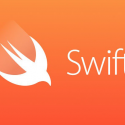Category: Swiftly Learning
-

Salad Shake, Our Food & Drink App!
Over a year ago, my husband and I started learning Swift in an effort to make our own app for iOS. Pretty much a year later, we finished Salad Shake, a Food and Drink app for iOS Devices. We learned a lot, and we’re getting ready to launch it on July 11, 2016 to the […]
-

Swift: Resolving Asset Catalog Compiler Warning
Fun thing happened the other day as I created a project to test out some code in XCode, I had initially set it to iPhone only by mistake then went back to set the app to Universal, only to encounter two warnings that had me puzzled as to how to resolve it. This isn’t a […]
-

Swift: Cocos2D and SpriteBuilder Developer Guide
Starting off a while ago, I attempted to get familiarized with the Cocos2D game framework. Things ground to a halt when I realized that 1) I wasn’t familiar enough with Obj-C to comprehend the same things within Cocos2D, 2) Things were transitioning to Swift at the time and so was I, and 3) There didn’t […]
-

Swift: Arc4Random Type Casting
I’ve been struggling like usual with a relatively simple problem the last two days this time, it’s getting arc4random_uniform to give me a randomized value from an array. Sure, it’s an easy problem for someone more experienced, so prepare to laugh. It occurred to me to type cast arc4random the instant I saw the error. […]
-

Flappy Bird-Like Games & Swift Countdown
Seems to me like everyone and their cousin has a Flappy Bird knockoff on the app store. Call me slow on the uptick, but I only recently discovered that App Flipping existed. I don’t like the industry or the approach. But I can’t deny that if someone makes a buck flipping apps–then they’ve–made a buck […]
-

Swift: A Designer Tries Learning Swift
I’ve been wrestling with Swift for a few months. Before that, it was Objective-C. Of course, I’m talking about Apple’s development languages for their mobile platforms. Truth is, I don’t know how far I really am because some things make sense and some other things that should make sense, don’t. What I’m going to start […]